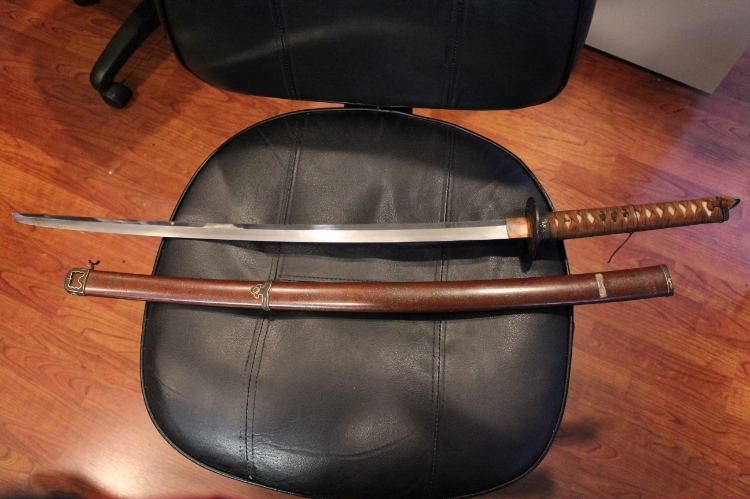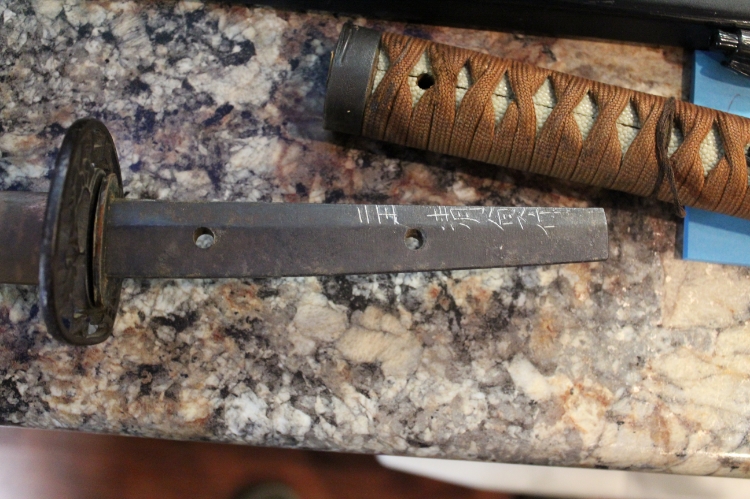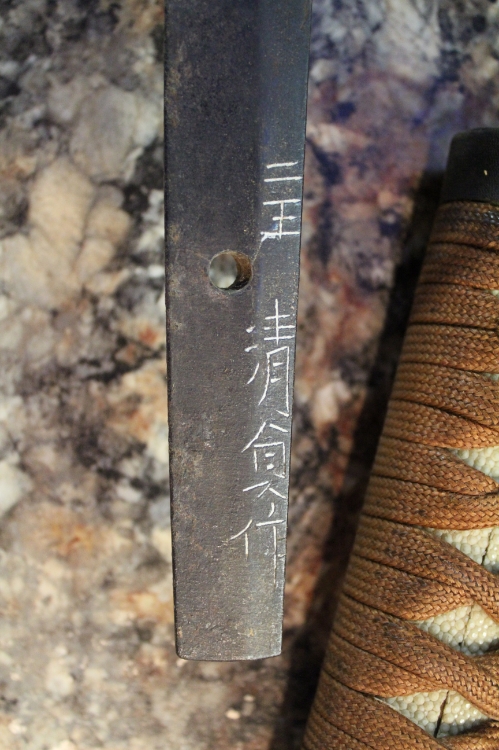Posts: 420 Location: NY, NY
Tue 20 Aug, 2013 2:27 pm
Hello everyone. I am a little late to the party, but can offer some further information.
I believe the smith name is Kiyosada (清貞). The "sada" character looks different from modern "sada" but is in this form on old swords. Hawley's lists ~20 smiths with this name from Koto to Shinshinto period.
Full signature is 二王清貞作 – nio Kiyosada saku – Made by Kiyosada of Nio School.
Mei database
lists one smith with this exact mei in Suo province ca. 1441-1444 AD.
Cross-referencing with Hawley's, I see a few more smiths dating from 1362–1544 using same signature or not listed with "saku," all from Suo province.
The biggest failing of my nihonto library is not many thorough Koto sources, but Kokan Nagayama's desk reference lists some Nio school information:
| Quote: |
Nio smiths were active through the end of the Edo period.
...
The Sue-Nio School:
The smiths... Kiyosada... belong to the later Sue-Nio school. Workmanship, based on the suguba of Yamato-den, is similar to that of Ko-Nio and bears a close resemblance to Sue-Tegai and Sue-Mihara as well.
Jihada: ...a weak mokume hada mixed with masame-hada and is not very visible. Mune-yaki and hera-kage are seen at times.
Hamon: The temper line is chu-suguba mixed with ko-midare. Nie is scarce and looks like nioi deki. Koshi-no-hiraita midare hamon with yaki-kuzure resemble work done by Sukesada.
Boshi: Boshi is ko-maru and midare komi. Often the patterns on the two sides are different.
Nakago: the nakagojiri is an exaggerated iriyamagata. The two characters for Nio are usually inscribed before the smith's signatures. |
Despite the line that Nio smiths worked through late Edo, I see no Nio Kiyosada past Koto period in Hawley's, or the Shinto/Shinshinto Nihonto Koza.
In this case the nakago has been shortened (note the multiple mekugi-ana and the flat termination). The patina looks good for Koto period to my eyes. Is there chalk or talcum in the mei? OK if so but do not leave it there permanently. Chu-suguba looks correct re: hamon, cannot see hada or other details in pics. Tall shinogi may also be a Yamato-den trait. Long slender tachi shape is good too. Overall from these photos cannot rule out genuine mei, which is good news.
Koshirae are not gunto koshirae overall, especially not fittings and tsuka. With respect to Edward, the saya is a handachi style, popular in Shinshinto / gendai times but not quite the same as most gunto (especially not with aoigai lacquer). I would guess the sword was most recently remounted in shinshinto period. This is just an estimate however. The koshirae are of average quality, not too bad and in acceptable condition minus the missing kurikata and somewhat knackered itomaki.
It is absolutely a real old Japanese sword. Mei is not certain, would have to be authenticated through shinsa (or at least comparisons with genuine mei), but that is par for the course. Looks like there might be some ware (grain openings), minor flaws which speak to a less-perfect blade, but this is more forgivable the older the blade is.
I will see if I can find more. Blade is worth several thousand dollars minimum (could be worth quite a bit more, depending on if the mei is genuine and the quality of the workmanship) and is in surprisingly good condition since it was presumably not kept by someone who knew much about nihonto. 



